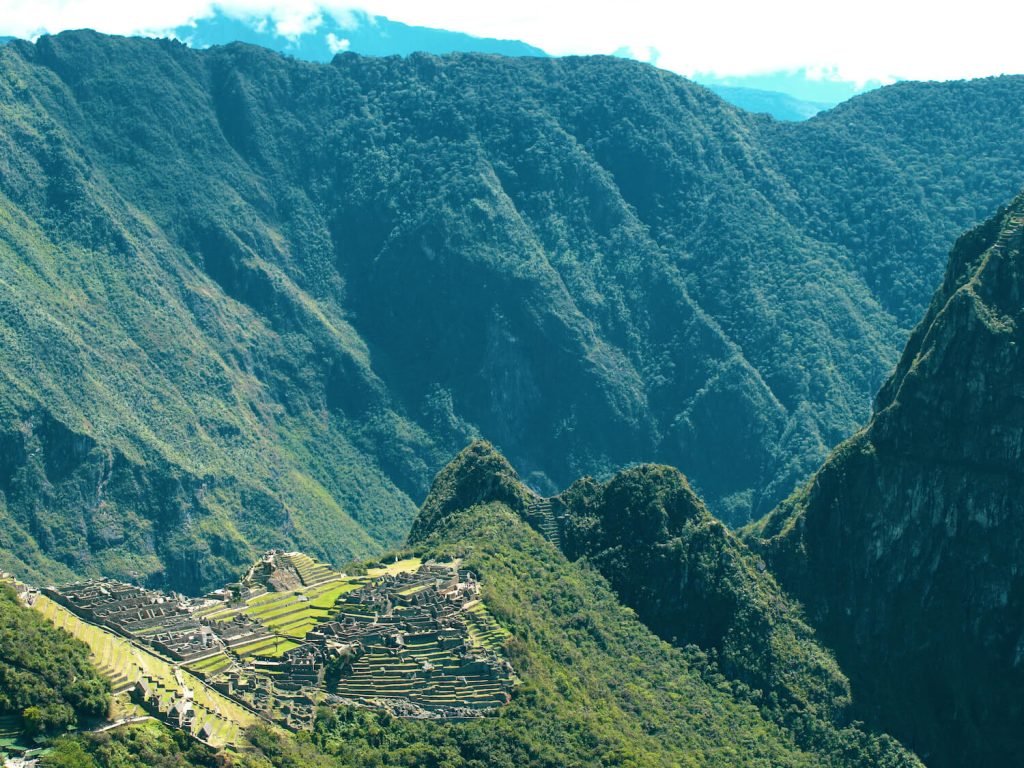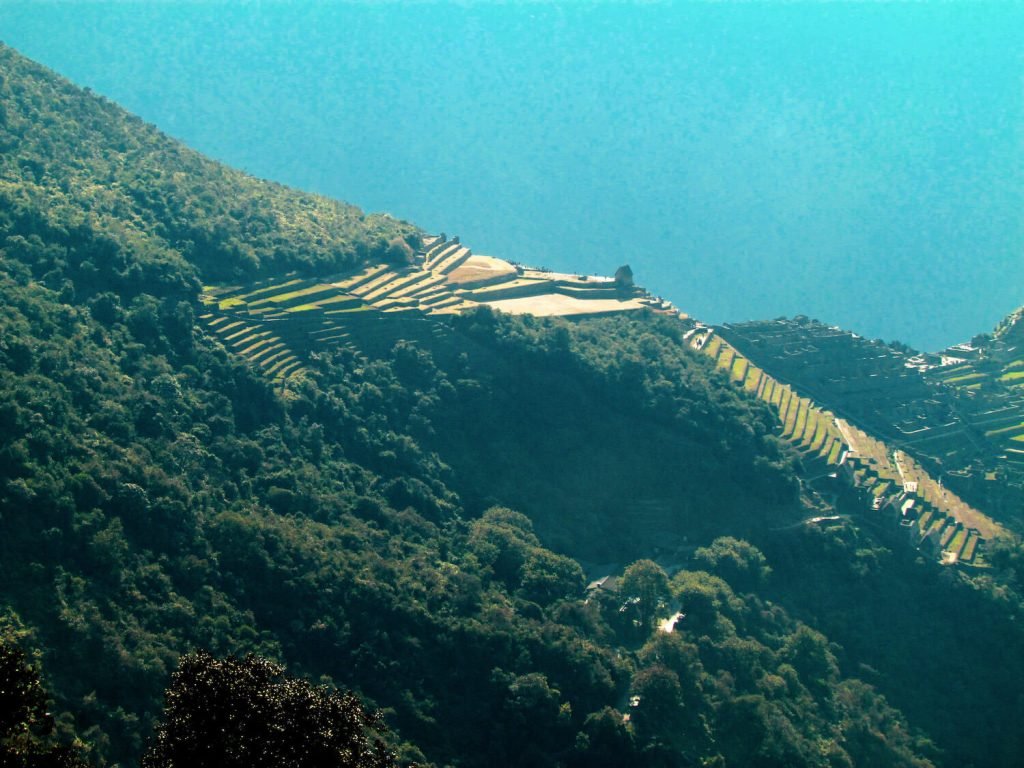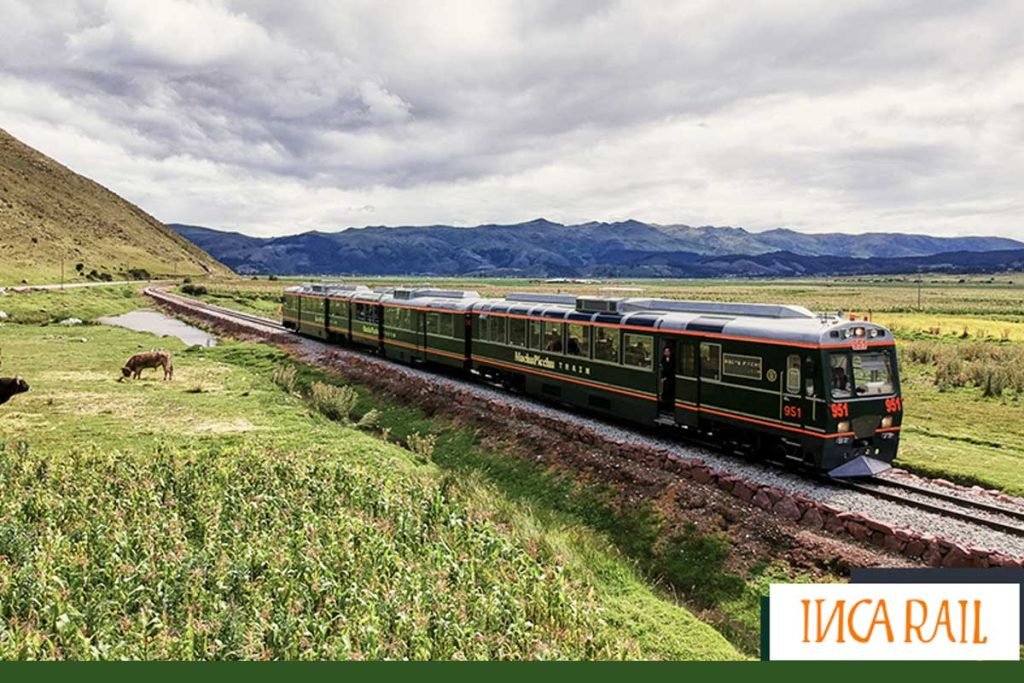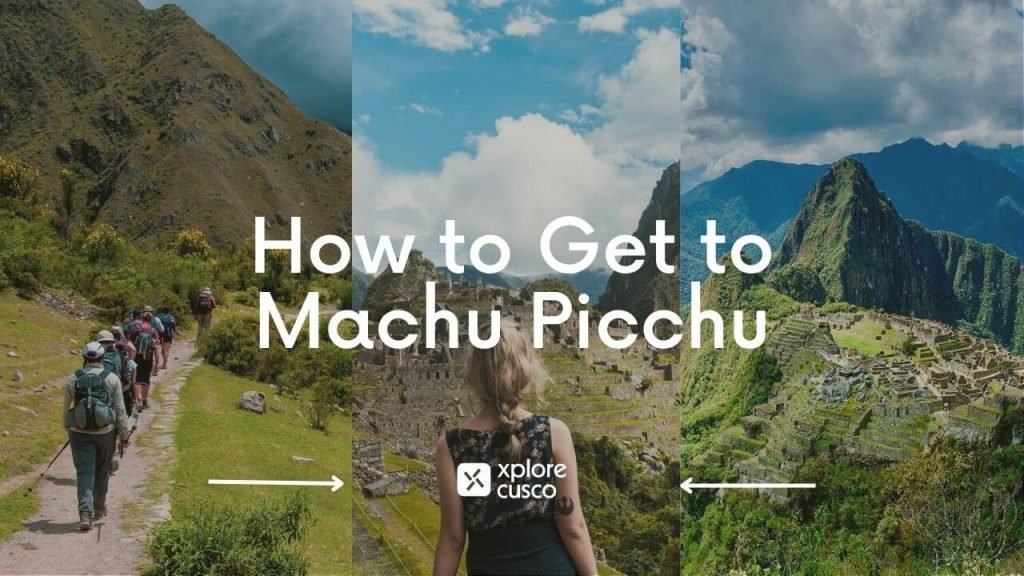Machu Picchu, the ancient Incan citadel perched high in the Andes mountains, is one of the most iconic destinations in the world. To get there, however, requires some planning and preparation. In this guide, we’ll walk you through everything you need to know about how to get to Machu Picchu, from getting to Cusco to choosing between different routes and treks.
We’ll also share tips on when to go, what to know before you arrive, and recommendations to ensure your trip is as smooth and enjoyable as possible. Whether you’re a seasoned traveler or a first-time visitor to Peru, our guide will help you make the most of your journey to this extraordinary site.
Machu Picchu Location
First things first, let’s talk about where Machu Picchu is located and why it’s important to know how to get there. It is situated in the Andes Mountains of Peru, about 80 kilometers northwest of Cusco. This ancient Incan city was built in the 15th century and is now one of the most popular tourist destinations in South America.
It’s important to note that this Inca site is not accessible by car, so you’ll need to plan your journey accordingly. The most common way to get to Machu Picchu is by train from the nearby town of Aguas Calientes, which is only reachable by foot or train.


Different Ways to Get to Machu Picchu
There are several ways to get to Machu Picchu, depending on your preferences and budget. Here are some of the most common options:
- Take a guided tour: Many travel agencies in Cusco offer guided tours to Machu Picchu that include transportation, tickets, and a guide. This is a great option if you want a hassle-free experience and want to learn more about the history and culture of the Inca citadel.
- Go on your own: If you’re feeling adventurous, you can also plan your own trip to Machu Picchu. This will require a bit more planning and effort, but it can also be a more rewarding experience.
- Hike the Inca Trail: The Inca Trail is a famous four-day trek that takes you through the Andes Mountains and ends at Machu Picchu. This is a great option if you’re up for a challenge and want to experience the beautiful scenery of the region.
- Take the train: The most popular way to get to Machu Picchu is by taking the train from Cusco or Ollantaytambo to Aguas Calientes. This is a comfortable and scenic option that allows you to enjoy the beauty of the Andes Mountains.


Routes to Get to Machu Picchu by Yourself
If you’re planning to get to Machu Picchu on your own, there are several routes you can take. One popular option is to hike the Salkantay Trek, which is a five-day trek that takes you through stunning mountain scenery and ends at Machu Picchu.
Another option is to take the Lares Trek, which is a three-day trek that takes you through traditional Andean communities and stunning landscapes. Both of these treks require a bit more planning and preparation, but they are also more off-the-beaten-path and offer a unique perspective on the region.
Getting to Cusco from Everywhere
Cusco is a well-known city in Peru, with a rich history and culture that attracts travelers from all over the world. Getting to Cusco is relatively easy, as the city has its own airport and is also accessible by road. In this section, we will cover some of the most common ways to get to Cusco from different parts of the country.
From Lima to Cusco
The most common way to get to Cusco from Lima is by plane. There are several airlines that operate daily flights between Lima and Cusco, and the flight time is approximately one hour. It is also possible to take a long-distance bus from Lima to Cusco, which takes around 20 hours. However, this option is not recommended as the journey can be uncomfortable and the roads can be dangerous.
From Arequipa to Cusco
Arequipa is another popular city in Peru and is located in the south of the country. To get to Cusco from Arequipa, you can take a bus or a plane. There are several bus companies that operate daily services between the two cities, with a travel time of approximately 10 hours. Alternatively, you can take a flight from Arequipa to Cusco, which takes around one hour.
From Puno & Lake Titicaca to Cusco
Puno is a city located in the south of Peru and is known for its proximity to Lake Titicaca, the highest navigable lake in the world. To get to Cusco from Puno, you can take a bus or a train. There are several bus companies that operate daily services between the two cities, with a travel time of approximately 6 hours. The train journey from Puno to Cusco is also a popular option, with stunning views of the Andes Mountains and the Altiplano.
Getting from Cusco to Aguas Calientes
After arriving in Cusco, you’ll need to make your way to Aguas Calientes, the gateway to Machu Picchu. There are two main ways to do this: by train or by car followed by a walk.
Getting by Train
The most popular option is to take the train from Cusco or Ollantaytambo to Aguas Calientes. There are two train companies that offer this service: PeruRail and Inca Rail. PeruRail has two train options: the Vistadome and the Expedition. The Vistadome is a more luxurious train with larger windows, snacks and beverages, and live music and dancing. The Expedition is a more budget-friendly option with comfortable seats and large windows for scenic views. Inca Rail has four train options: the Voyager, the 360°, the First Class, and the Private. Each option varies in price and level of luxury, but all provide stunning views of the Andes mountains.
Getting by Car + Hike
Another option is to take a car or van to the town of Ollantaytambo and then hike the Inca Trail to Aguas Calientes. This route is not as popular as taking the train, but it offers a unique and adventurous experience. The hike can take anywhere from 2 to 4 days depending on the route taken and the pace of the hiker. This option requires a bit more planning and preparation, as hikers will need to bring camping equipment and food. There are also tour companies that offer guided hikes with porters to carry the equipment, making the trek less strenuous.
Getting from Aguas Calientes to Machu Picchu
From Aguas Calientes, you have two options to reach Machu Picchu: take a bus or hike. The bus takes about 20 minutes and departs from the town center, while the hike takes about 1.5-2 hours and involves climbing up steep stairs. Keep in mind that the hike can be challenging, especially if you’re not used to high altitudes or physical activity, so make sure to take your time and bring plenty of water.
How to get by Inca Trail
The Inca Trail is one of the most famous and sought-after treks in the world, leading to the ancient ruins of Machu Picchu. There are several options for trekking the Inca Trail, including the classic 4-day trek, the 2-day trek, and the 1-day trek. Each option offers a different experience and level of difficulty, so it’s important to choose the one that best suits your preferences and abilities.
Classic 4 day Inca Trail
The classic 4-day Inca Trail is the most popular and well-known route. This trek takes you through beautiful Andean landscapes, high mountain passes, and Inca ruins, culminating in the breathtaking views of Machu Picchu at sunrise on the fourth day. The trek covers a distance of approximately 42 kilometers and is considered a moderate to difficult trek due to the high altitude and steep climbs.
Check our our tour of: Inca Trail 4 Days to Machu Picchu.


2 day Inca Trail
If you don’t have the time or physical ability to complete the 4-day trek, the 2-day Inca Trail is a great alternative. This trek covers a distance of approximately 12 kilometers and includes a visit to the stunning ruins of Wiñay Wayna before reaching Machu Picchu on the second day.
The 2-day route does not require purchasing a permit well in advance, which makes it a more flexible option. However, it is still a demanding route due to the altitude and steep terrain.
1 Day Inca Trail
For those who want to experience the Inca Trail but are short on time or prefer a less strenuous option, the 1-day Inca Trail is a great choice. This trek covers a distance of approximately 6 kilometers and takes you through stunning Andean scenery and Inca ruins before arriving at Machu Picchu in the afternoon.
Alternative Treks
If you’re looking for an adventure that is a bit off the beaten path, there are several alternative treks to Machu Picchu that are worth considering. These treks offer unique experiences and stunning scenery, and can be a great option if you’re looking for something a bit different than the classic Inca Trail.
Salkantay Trek
The Salkantay Trek is one of the most popular alternative treks to Machu Picchu. This trek takes you through stunning Andean landscapes, including snow-capped mountains, turquoise lakes, and lush rainforests. The trek is a bit more challenging than the Inca Trail, but the reward is worth it: you’ll get to see Machu Picchu from a unique perspective, and you’ll avoid the crowds that can sometimes plague the classic route.
Lares Trek
The Lares Trek is another great option for those looking for an alternative to the Inca Trail. This trek takes you through traditional Andean villages, where you can experience local culture and learn about ancient Incan traditions. You’ll also get to see beautiful mountain scenery, including snow-capped peaks and turquoise lakes. The trek is a bit less challenging than the Salkantay Trek, but still requires a good level of fitness.
Inca Jungle Trek
The Inca Jungle Trek is a unique option that combines trekking with adventure activities like biking and zip-lining. This trek takes you through lush rainforest, where you’ll see exotic wildlife and stunning waterfalls. You’ll also get to bike through small villages and zip-line through the treetops. The trek is less challenging than the Inca Trail, but still requires a good level of fitness.
Choquequirao Trek
The Choquequirao Trek is a challenging but rewarding alternative to the Inca Trail. This trek takes you to the ancient Incan site of Choquequirao, which is often called the “sister city” of Machu Picchu. The trek takes you through beautiful Andean landscapes, including snow-capped mountains and lush rainforests. The trek is less crowded than the Inca Trail, but requires a high level of fitness due to the steep terrain.
Taking a Train vs Trekking to Machu Picchu
Deciding whether to take a train or trek to Machu Picchu depends on your budget, time, and personal preferences. Taking a train is quicker and more comfortable, but also more expensive. Trekking is a more immersive and adventurous experience, but also requires more planning and physical effort.
Get to know Cusco before going to Machu Picchu
Before embarking on your journey to Machu Picchu, take some time to get to know the charming city of Cusco. This ancient city was the heart of the Inca empire and is a UNESCO World Heritage site. It is also the starting point for many of the treks to Machu Picchu.
Cusco is a city with a rich history and culture, and there is so much to see and do. Some of the highlights include the Plaza de Armas, the Cathedral of Cusco, and the Qoricancha, which was the most important temple of the Inca empire. The San Pedro Market is also a must-visit, where you can sample local foods and pick up souvenirs.
In addition to the historical and cultural attractions, Cusco is also known for its vibrant nightlife and delicious cuisine. Take some time to explore the restaurants and bars and sample some of the local specialties, such as alpaca meat and quinoa soup.
Getting to know Cusco before heading to Machu Picchu will enrich your experience and give you a deeper appreciation for the culture and history of this incredible region.
When to go to Machu Picchu
The best time to visit Machu Picchu is during the dry season, which runs from May to September. This is the peak tourist season, so expect larger crowds and higher prices. The rainy season, from November to March, can make the trails slippery and muddy, but also offers lush green landscapes and fewer tourists.
Things to know before going to Machu Picchu
Before you head out to Machu Picchu, it’s essential to keep in mind some important details to make your trip more enjoyable and stress-free. Here are a few things to know before you go:
- Altitude: Machu Picchu is situated at an elevation of 2,430 meters (7,972 feet), so altitude sickness can be a concern. We recommend that you spend a few days in Cusco to acclimate to the altitude before embarking on your Machu Picchu journey.
- Weather: Machu Picchu has two distinct seasons: dry season and rainy season. The dry season, from May to October, is the best time to visit, with sunny skies and cool temperatures. The rainy season, from November to April, brings warm temperatures and daily rain showers. Make sure to pack accordingly, with comfortable and weather-appropriate clothes.
- Tickets: You must purchase your Machu Picchu entrance ticket in advance. Tickets are not sold at the entrance, and there is a daily limit on the number of visitors allowed. We recommend booking your tickets at least a few weeks in advance to ensure availability.
- Rules and regulations: There are specific rules and regulations that visitors must follow while at Machu Picchu. For example, you cannot bring food, drink (except water), or backpacks larger than 20L inside the ruins. You also cannot use tripods, selfie sticks, or drones. Make sure to read and follow the regulations to avoid any issues.
What we recommend (by Xplore Cusco)
At Xplore Cusco, we want you to have the best Machu Picchu experience possible. Here are our recommendations to ensure a smooth and unforgettable journey:
- Plan ahead: Machu Picchu is a popular destination, so it’s important to plan your trip in advance to avoid any last-minute issues. Make sure to book your tickets, transportation, and accommodations in advance to ensure availability.
- Consider hiring a guide: A knowledgeable guide can make a huge difference in your Machu Picchu experience, providing you with valuable information and insights about the ruins’ history and culture. At Xplore Cusco, we offer expert local guides who can enhance your visit.
- Be prepared for the weather: Machu Picchu has a varied climate, so make sure to bring appropriate clothing for rain, sun, and cold. We recommend packing light layers, a rain jacket, and comfortable shoes for walking.
- Take it slow: Altitude sickness can be a concern at Machu Picchu, so it’s important to take it slow and allow yourself time to acclimate. We recommend spending a few days in Cusco to adjust to the altitude before heading to Machu Picchu.
- Respect the site: Machu Picchu is a UNESCO World Heritage Site and should be treated with respect. Follow the rules and regulations, stay on designated paths, and avoid damaging or littering the ruins.
Stay at Casa Rumichaca in the Sacred Valley
If you’re planning on visiting Machu Picchu, it’s a good idea to stay in the Sacred Valley close to the train station, as it’s the starting point for many tours to Machu Picchu. Xplore Cusco has a beautiful house called “Casa Rumichaca”, which is a boutique minimalist house with two apartments, perfect for those who want a peaceful and comfortable stay.
Casa Rumichaca is located in Urubamba, a town in the heart of the Sacred Valley of the Incas. The house has a beautiful garden and outdoor areas where you can relax and enjoy the amazing views of the surrounding mountains. The apartments are spacious and well-equipped, with everything you need for a comfortable stay, including a kitchenette, a living room, and a private bathroom.
Staying at Casa Rumichaca is not only convenient but also a great way to experience the local culture and traditions. The town of Urubamba is known for its traditional markets, where you can find fresh produce, local crafts, and textiles. You can also visit the nearby Inca ruins, such as Ollantaytambo and Pisac, which are great examples of Inca architecture and engineering.
Conclusion
Machu Picchu is a bucket-list destination that requires some planning and preparation. But with the right information and guidance, you can have an unforgettable journey to this ancient wonder of the world. At Xplore Cusco, we are committed to providing you with the best experience possible, so don’t hesitate to contact us for any questions or assistance.



